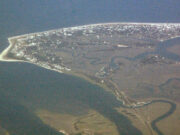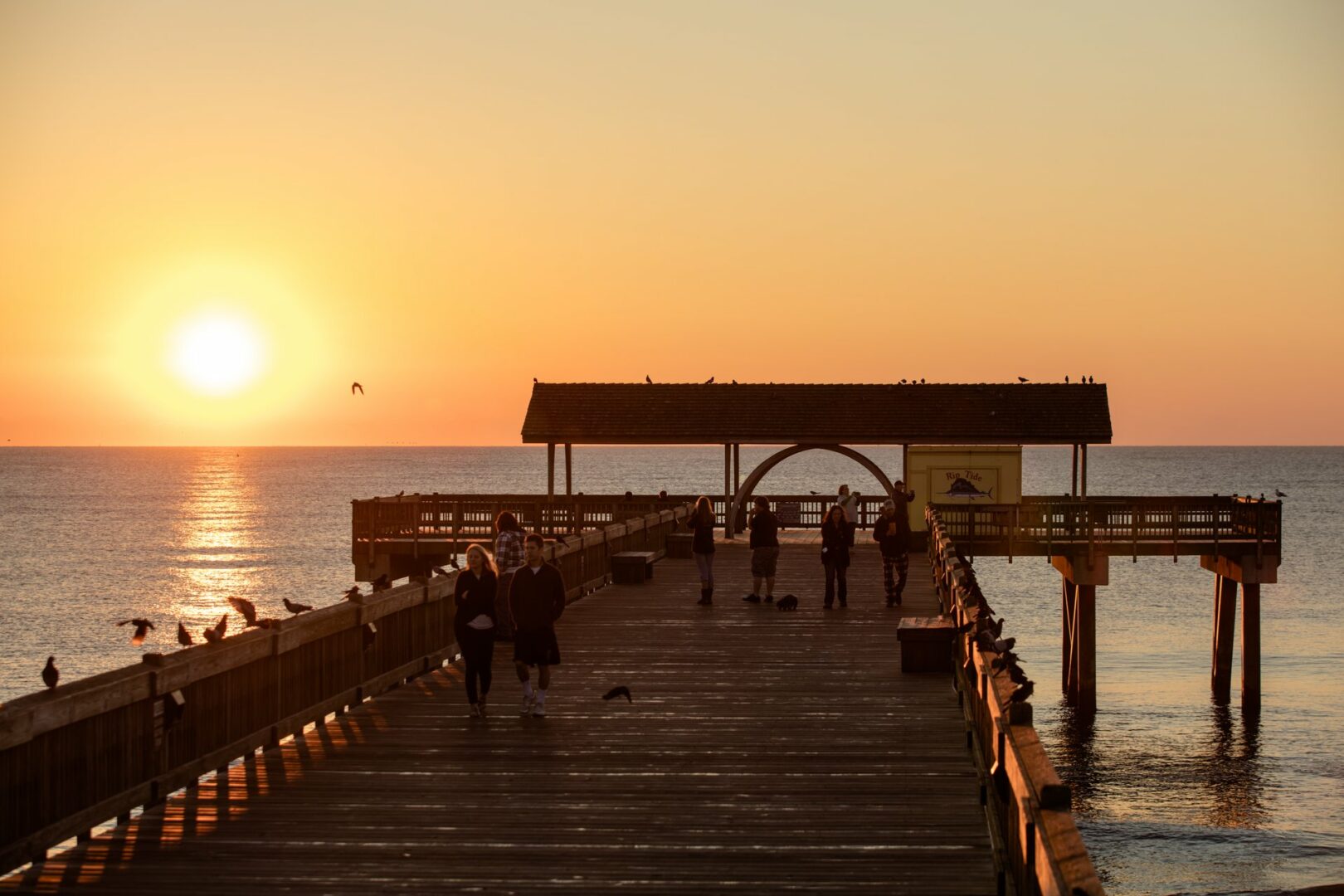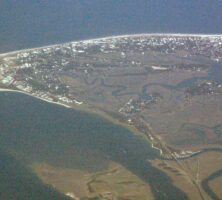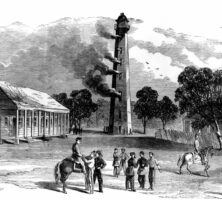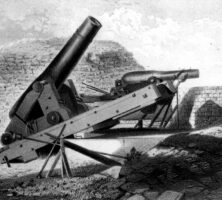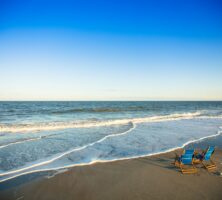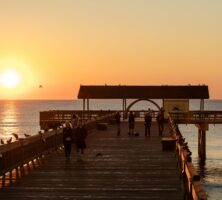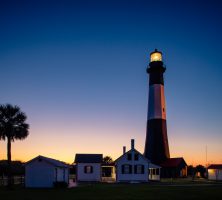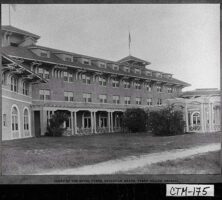Tybee Island, located approximately eighteen miles from Savannah, is a seaside community in the upper coastal region of Georgia. Sitting at the mouth of the Savannah River, the 2.7-square-mile island holds a year-round population of approximately 3,400 residents, although this population increases greatly during the summer season. Longtime residents know Tybee Island as Savannah Beach, the one-time name that reflected both the town’s proximity to the river and its resort-like atmosphere.
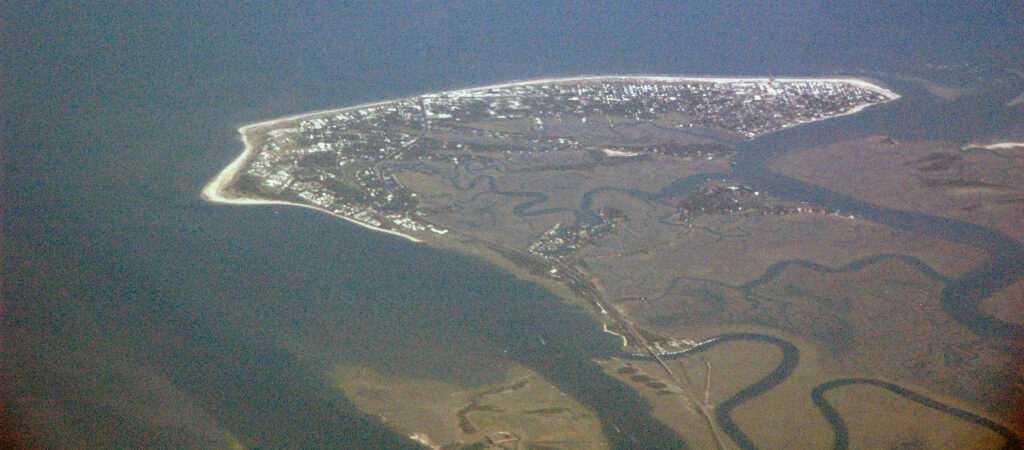
Image from James St. John
Early History
Tybee is thought to have been originally occupied by the Euchee tribe of Native Americans, from whom it got its name. In the Euchee language tybee means salt, a plentiful natural resource in the area. Before the island was colonized as part of Georgia, it was claimed by explorer Lucas Vasquez de Ayllon in 1520 as part of Spanish Florida. During the seventeenth century, France became interested in the island because of its sassafras root, which was thought to be a miracle elixir that—once made into tea—would cure many ailments. Protective of its territory, the Spanish attacked and captured a French ship moored off the coast of Tybee, sparking the first naval battle off the island’s shores. The French later returned, however, as part of the forces helping the colonies to revolt against the British crown during the American Revolution (1775-83).
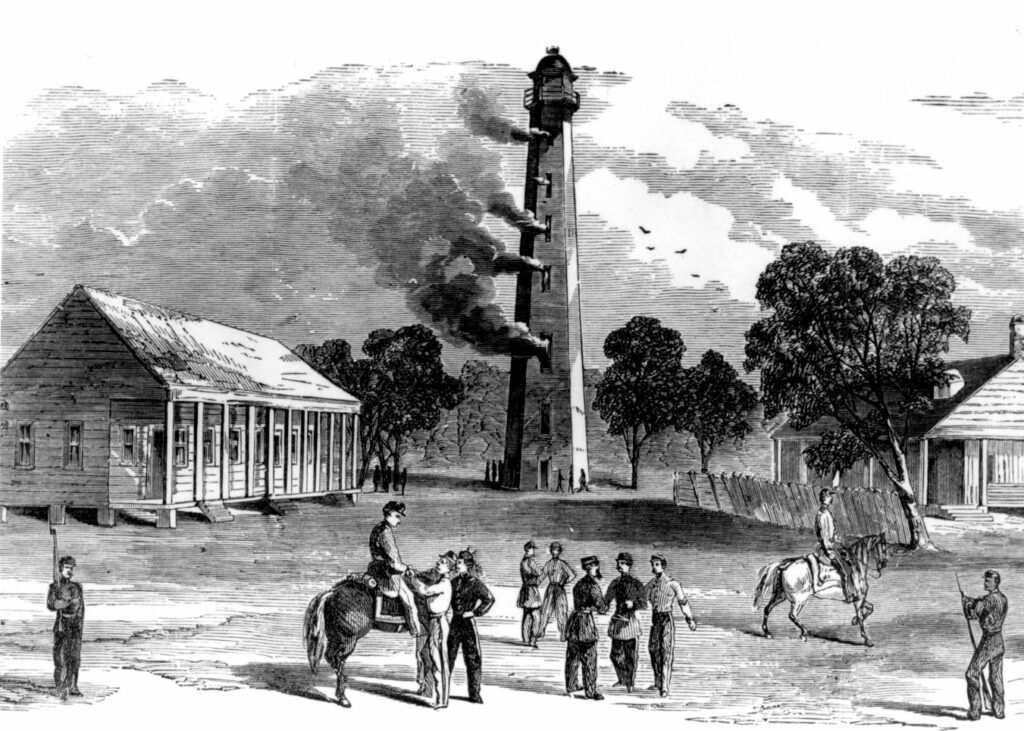
In 1733 General James Oglethorpe and the Trustees established Georgia as a military buffer zone, with Savannah as the capital, between the colony of South Carolina and the territory of Spanish Florida. Tybee Island played an important role in the creation of the new colony. Oglethorpe recognized the strategic importance of placing an outpost on Tybee to guard the mouth of the river that guided ships into the port of Savannah, and in 1736 a small fort and lighthouse were constructed on the island.
Military History
Tybee Island played an important role in several military battles. During the Revolutionary War, when British forces took control of Savannah, French and American forces used Tybee Island and other outposts as staging grounds in preparation for what was to be the second bloodiest battle of the war, the 1779 Siege of Savannah. (Only the 1775 Battle of Bunker Hill in Massachusetts resulted in higher casualties.) Tybee saw little action in the War of 1812 (1812-15), although a warning system using the island’s lighthouse was set up to signal an imminent British attack on the area.
At the beginning of the Civil War (1861-65), Confederate forces occupied both Tybee Island and nearby Fort Pulaski, located just across the mouth of the Savannah River. In December 1861 Confederate troops, believing the fort to be impenetrable, withdrew to Pulaski. Tybee was quickly occupied by Union forces, who constructed eleven cannon batteries and used a newly developed weapon called a rifled cannon to bombard Fort Pulaski, which finally fell on April 11, 1862. After the war, Fort Screven was built on the north end of Tybee Island from 1885 to 1897, when it opened as part of the U.S. coastal defense system. Military troops trained at Screven and from this fort guarded the United States through the Spanish-American War (1898), World War I (1917-18), and World War II (1941-45). Fort Screven was closed by the federal government in 1947 and sold to the city; part of it now serves as the museum of the Tybee Island Historical Society.
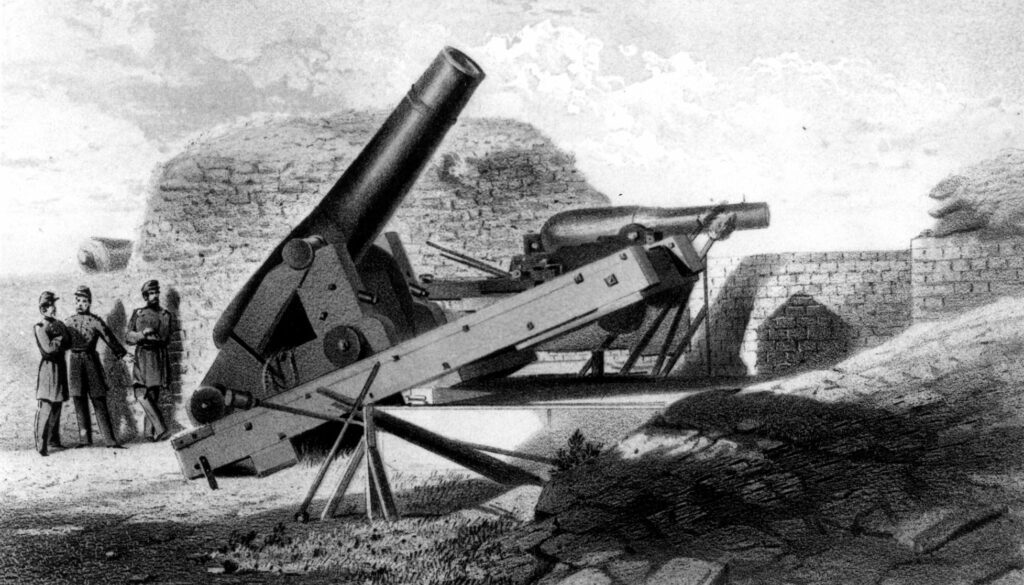
Courtesy of Georgia Historical Society.
Taking the Salts
Known for its mild, fresh air and salty ocean breezes, Tybee Island took a new course toward the end of the 1800s, becoming a destination well known as a tonic for people with asthma, allergies, and other ailments. The practice called “taking the salts” likely derived from the many beneficial qualities attributed to the area by doctors, who urged patients to spend time on Tybee to cure their ailments. Supported by the Froebel Circle of Savannah, the Fresh Air Home provided a camp atmosphere in which inland children could increase their health and happiness through exposure to the sea during the summer months.
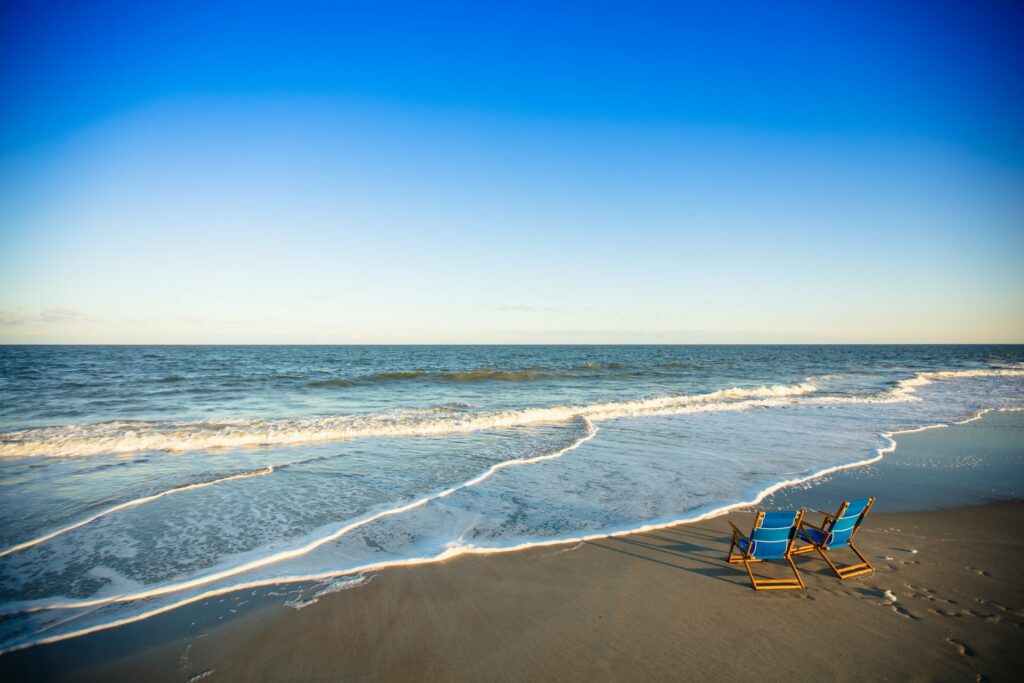
Courtesy of Explore Georgia.
Tybee also became well known during this time as a resort town. A short boat or train ride away from Savannah, Savannah Beach promised relief from the summertime heat and humidity that plagued inland areas. The Tybrisa Pavilion, with its famous crystal ball, big bands, and dime dances, was the island’s most popular destination. With the opening of Tybee Road in 1923 to automobile traffic, the way of life on the island slowly started to change. When the Tybrisa Pavilion and other local establishments burned down in 1967, the end of an era was apparent.
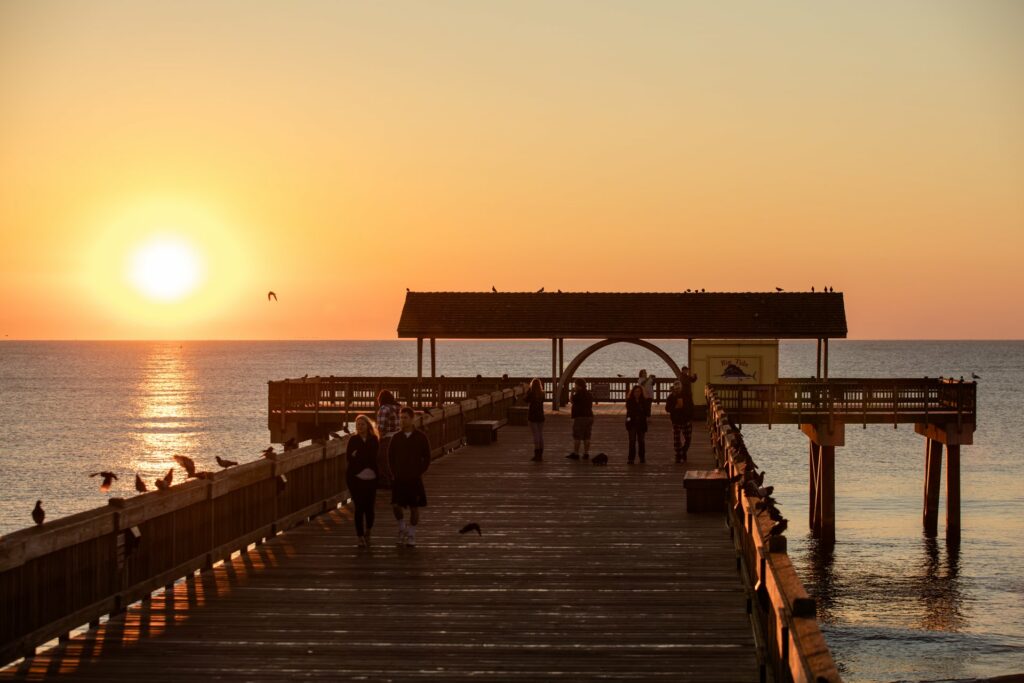
Courtesy of Explore Georgia.
Tybee Island Landmarks
The Tybee Island Light Station, known as the Tybee Lighthouse, having lit the entrance of the Savannah River since 1736, is perhaps the most identifiable landmark on the island. It is one of the oldest U.S. lighthouses still in existence, and one of a few original lighthouses in full operation that still stands with its original base. Renovation commenced on the lighthouse in 1999, and in 2002 it was one of the first lighthouses transferred from federal to private ownership under the National Historic Lighthouse Preservation Act of 2000. It is now owned and managed by the Tybee Island Historical Society.
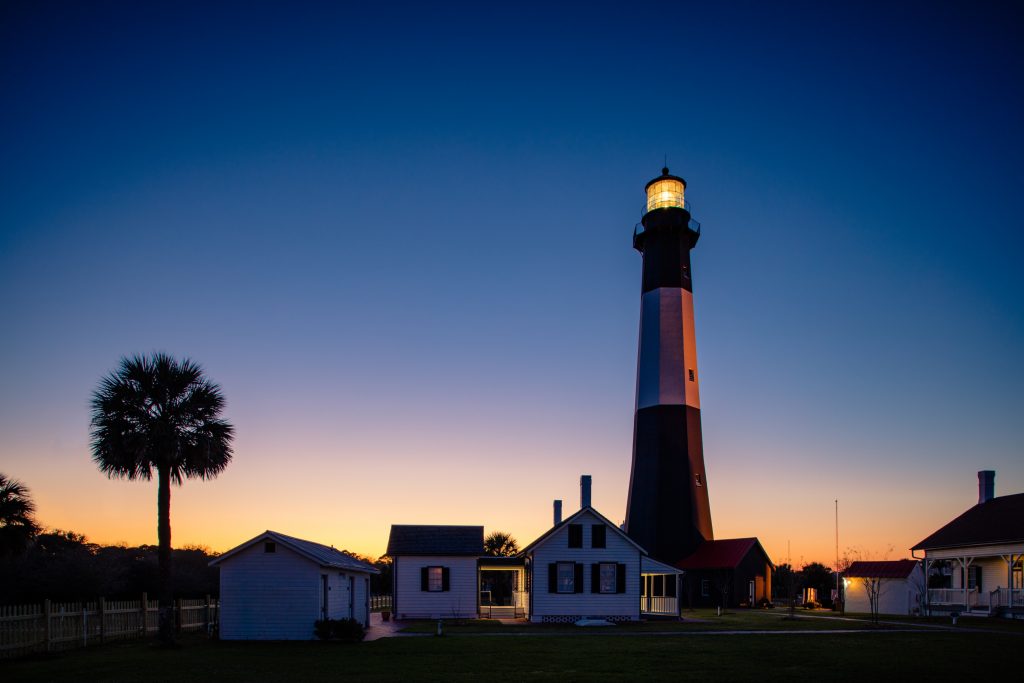
Courtesy of Explore Georgia.
The rate of construction on the island increased at the turn of the last century and echoed the popularity of the area as a resort. Although the grand hotels that once lined the beach, including the Hotel Tybee and the DeSoto Beach Hotel, no longer exist, classic beach-style architecture remains a common feature of the island’s houses.
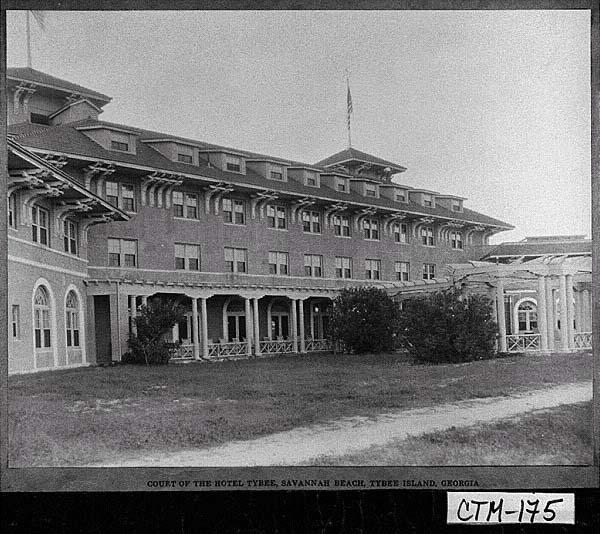
Courtesy of Georgia Archives.
Although visitors can no longer ride a train to Tybee, they are still able to sit under the Tybee Pavilion, fish off the Tybee Pier, and walk along beachfront avenues. Local events include several arts, food, and music festivals held at Tybee Pavilion; the annual Beach Bums Parade along Butler Avenue; and the Polar Bear Plunge swim in the Atlantic Ocean each New Year’s Day.


